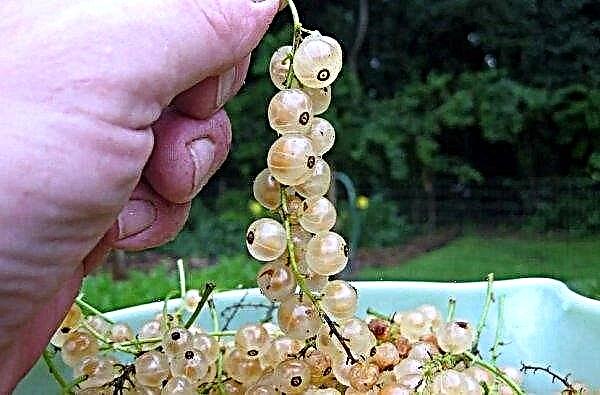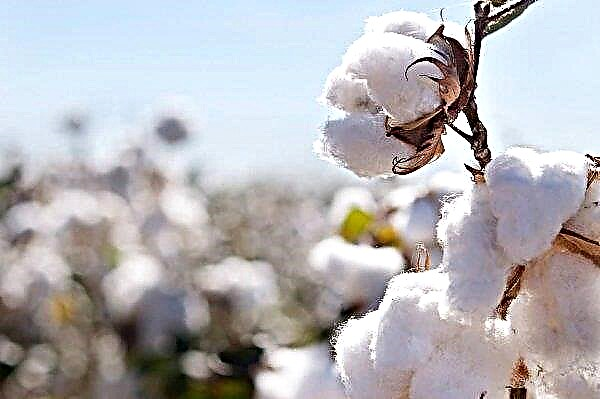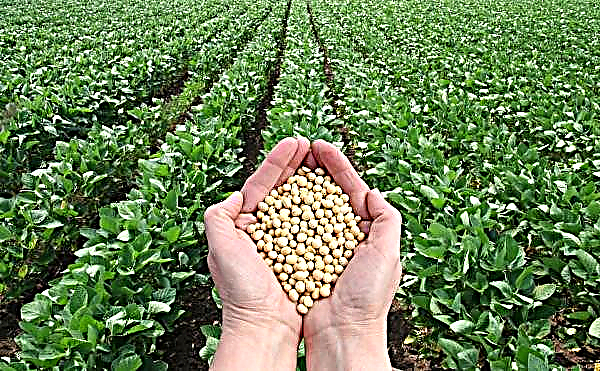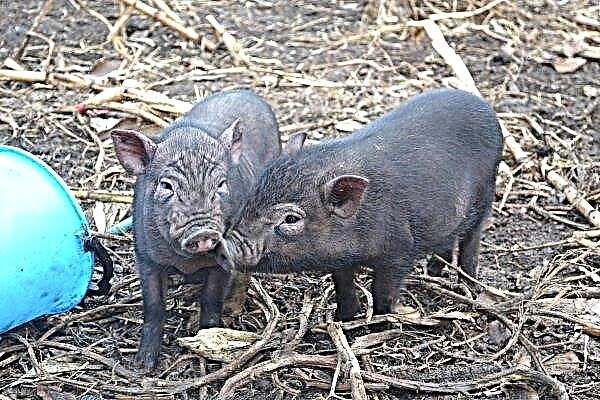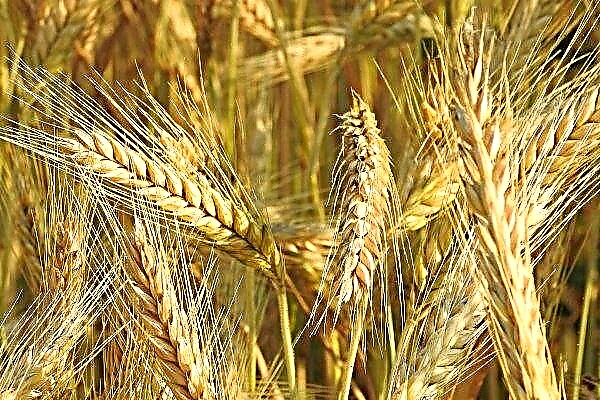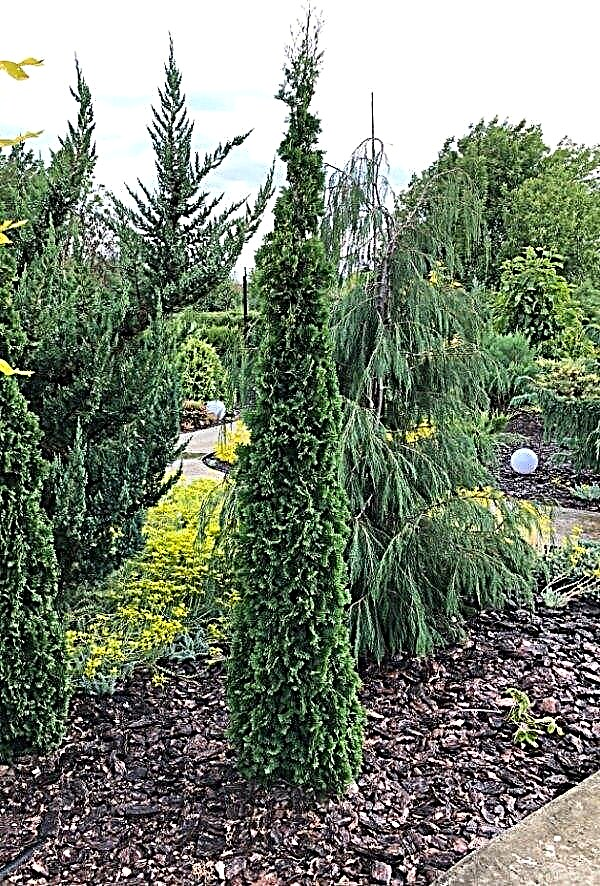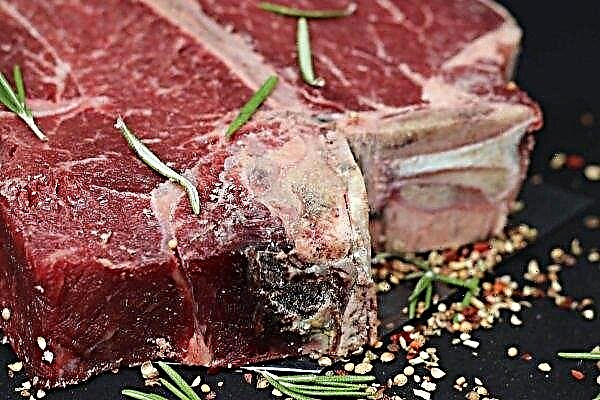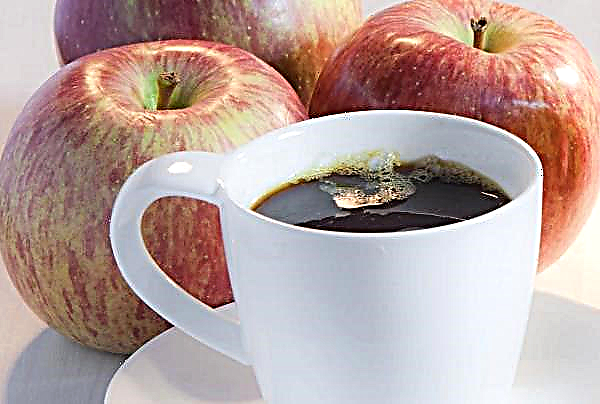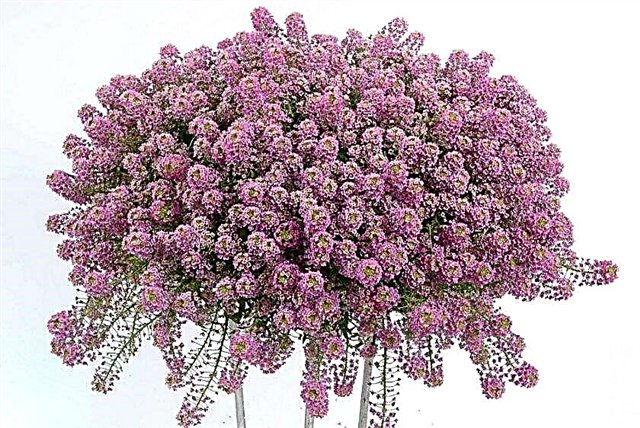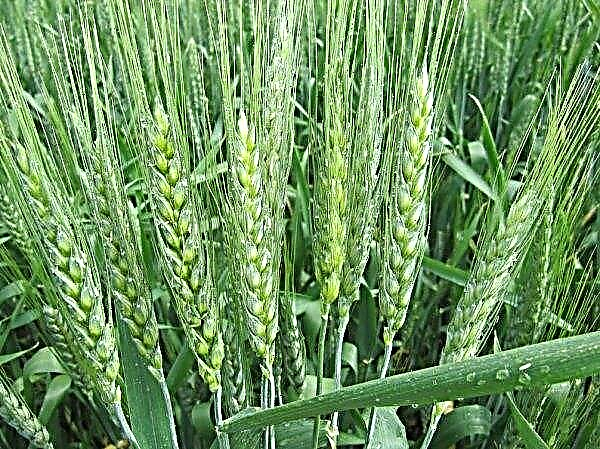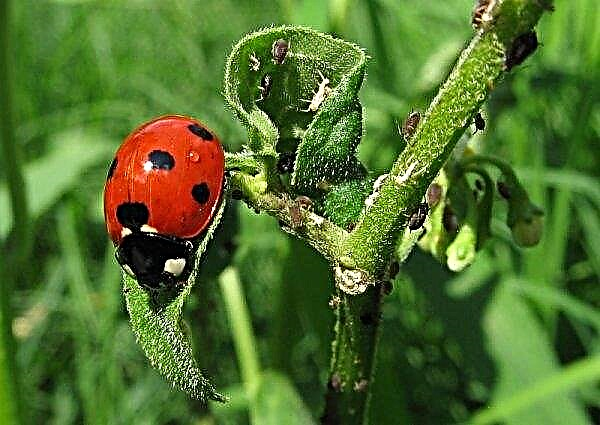Potato is a valuable food product for almost every person. Due to its versatility and ease of preparation, it finds application in any kitchen, and all that is required from the hostess is to choose the most delicious variety. One of these varietal variations is Bellarosa (or Cherry), the characteristic features of which will be discussed later.
Characterization and description of the variety
The variety in question is of Germanic origin, since the plant was bred in the city of Luneburg. The creator of today's popular potato is Europlant, a company that has been developing and selling new varieties of vegetables since 1993. Today, representative offices of this originator can be found in 70 different countries around the world.
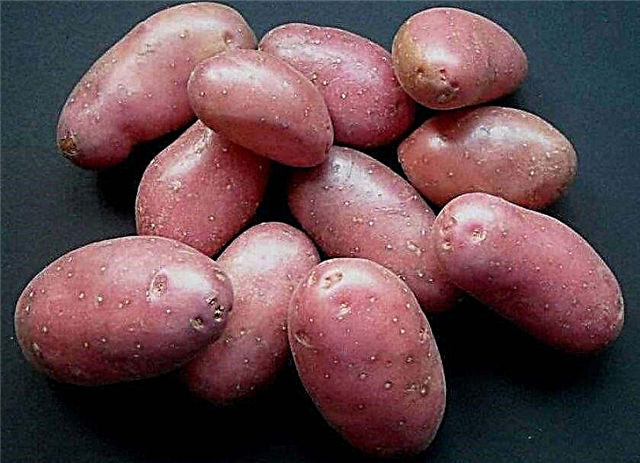
Advantages and disadvantages
Each cultivated plant variety has not only advantages, but also disadvantages: no matter how hard scientists try, it is impossible to completely exclude the possibility of negative qualities in a new culture.
- In the case of Bellarosa potatoes, the list of benefits includes:
- relatively quick fruit ripening - the first tubers are dug up already within 1.5–2 months after planting material is planted;
- the possibility of re-landing in warm climatic regions. If in April the soil warms up well, then before the onset of autumn cooling you will have time to plant potatoes of the Bellarosa variety again in your area;
- excellent yields. Subject to the rules of crop rotation and caring for plants from 1 ha, it is quite possible to collect up to 320 centners of root crops;
- good adaptive capabilities that allow you to plant a crop in almost any type of soil, with the exception of heavy clay substrates;
- high drought tolerance of the plant;
- excellent resistance to pathogens;
- the possibility of long-term storage and resistance to mechanical damage during long-term transportation.
As for the disadvantages of the variety, first of all it is worth recalling the friability of the tuberous part, which often complicates the harvesting process: the potatoes scattered in the hole are very easy to damage with a shovel.
Taste qualities
Growing up to 75 cm in height, strong stems with large leaves contribute to the formation of underground reddish or white-pink oval tubers with a characteristic pale yellow or cream color of the middle. The Bellarosa variety is classified as a table variety, which means that it is characterized by excellent taste.
Cooked fruits have a slightly sweet taste, which makes them a suitable option for cooking almost any dish. In addition, the friability of this potato is at an average level, which is why it is equally often used both for frying and for processing on mashed potatoes (it does not take much time to boil the fruit).
Did you know? Most potato varieties have yellow or white fruits, however, the Linzer Blaue variety stands out against their background. The fact is that not only the skin, but also the internal contents of the tubers of this plant has a saturated blue color.
Optimal landing times
The specific time for planting potato planting material depends on the specifics of the climatic region of its future growth. If in the southern part of the Russian Federation this may be the end of April, then residents of the northern regions of the country will have to wait with planting work until the end of May or the beginning of June. In order not to be mistaken in this matter, it is advisable to focus on the soil temperature: the optimum values for the described variety will be indicators not lower than + 8 ° C at a depth of 10 cm.
Planting and growing potatoes
Proper planting and successful further cultivation of potatoes in your area depends on a number of nuances, the main of which will be the observance of crop rotation rules, soil preparation in the selected area and further organization of appropriate care. Consider the features of each aspect of the activity.

Crop rotation rules
Almost any potato variety needs a sunny area with loose and fertile soil for successful growth and development. However, this does not mean at all that it is worth planting a crop in the same place for several years in a row. Depletion of the soil will not have the best effect on the formation of the crop, so next year it is advisable to choose a different plot for the plant. Bean, cabbage and cucumbers will be ideal precursors for the Bellarosa variety, and after harvesting, you can sow rye and mustard on the site of the tubers, which will add looseness to the soil and make it much more nutritious.
Soil requirements
Any vegetable crop feels good in loose soil, and Bellarosa potatoes are no exception in this matter. The first loosening of the substrate is carried out after the autumn harvest in the previous year, with simultaneous application of humus or compost (the norm is 4–5 kg per 1 m² of territory). The second time the procedure is repeated with the advent of spring, 2-3 weeks before planting material is planted.
If the soil was severely depleted, then you can repeat the introduction of organics, reducing the indicated dose to 2 kg per 1 m². Excessive amounts of nitrogen in the soil can build up green mass to the detriment of the tubers.
Important! During the spring digging of the plot, it is possible to fertilize the earth with complex mineral fertilizers, among which superphosphate compositions and potassium mixtures, which are introduced at the rate of 1.5–2 kg per 100 m² of area, will be especially valuable for the described crop.
Preparing planting material
Given the relatively early ripening time of Bellaroz potatoes, their planting is usually planned in late April or early May, but until that time, planting material should already be sprouted. To achieve this, potato tubers are removed from the storehouse approximately 20 days before the intended planting and left in a well-lit place with an air temperature of at least + 15 ° C. Preparedness for planting is easy to determine by visual assessment of appearance: a good planting material from the eyes appears young shoots.
Sometimes, for better germination, the tubers are laid out in layers in wooden boxes, while simultaneously providing a good flow of air to each of them. However, even in this case, the safety of the entire planting material cannot be guaranteed, therefore, if there is sufficient space, it is better to sprinkle the potatoes on the floor in one layer.
Landing technology
In general, there is nothing special about planting Bellarosa potatoes, so almost the only thing worth paying attention to is a suitable tuber placement scheme. In this case, we are talking about tall bushes, therefore, the distance between neighboring plants should be appropriate: at least 40 cm. You can leave 50 cm between rows.
The landing technology itself is simple and consists of the following simple steps:
- Organization of holes using a hand tool or walk-behind tractor (at a depth of 10-15 cm).
- Adding in them a teaspoon of mineral fertilizers (preferably mix the powder with the soil).
- Placing seed material in the wells so that each tuber is at some distance from its neighbor.
- Filling planted potatoes with soil and moistening plantings.
A special technique will help simplify the task of planting potatoes. When using a walk-behind tractor there is no need to organize holes, because potatoes can be placed in long furrows.
Potato care after planting
In order for the planted potato to grow well and bring in a plentiful harvest, it is important to provide suitable conditions for it. First of all, it is worth paying attention to the care of the soil, its moisture and fertilizing, and if pests appear on the bushes, then you will have to additionally treat the plants with special insecticidal preparations. Consider all the components of care more carefully.

Hilling and loosening the soil
Regular weeding and loosening of the soil is an obligatory requirement when growing the Bellarosa variety. Performing these manipulations, weeds can simultaneously be removed and the soil saturated with additional oxygen, preventing the formation of a crust on the surface of the substrate. For the entire period of the development of the culture, loosening of the soil should be performed at least three times: immediately after emergence and twice before the active flowering of the plant.
As soon as the height of the bushes reaches 15 cm, loosening can be replaced by hilling. The essence of this action is to rake the soil closer to the bush in order to increase its stability: the stem should not fall to the side.
Did you know? Belarusians are traditionally considered leaders in eating potatoes in the world. For a year, one citizen of this country eats about 180 kg of this vegetable, while Russians limit themselves to 90 kg per capita.
Watering and fertilizing
Like all early potato varieties, Bellarosa needs to be fed with enough magnesium, especially when it comes to growing a crop in a sandy substrate. Dolomite flour will be useful in this regard, the application rate of which in medium-acid soils is 45 kg per 1 hundredth.
However, this is not the only fertilizer necessary for potatoes during the growth period, therefore, an approximate plan of fertilizing the crop is as follows:
- Immediately after the appearance of the first shoots, the bushes are poured with infusion of manure or chicken droppings, breeding them in clear water 1:10.
- Before the plants bloom, a solution of urea (50-60 g per bucket of water) or a mixture of potassium sulfate and ash in a ratio of 1: 1 is applied to the soil.
- During the period of active flowering of potatoes, the most suitable nutritional composition for it is a mixture of mullein (10 l) and superphosphate (50 g), although you can also use ready-made mineral fertilizer.
In any case, no matter what composition you choose to nourish the culture, its application should be carried out only in moistened soil, so as not to burn the delicate parts of the plant. As for the individual irrigation, the Bellarosa variety needs it only in arid regions where there has been no rain for months.
Video: Feeding potatoes in the flowering phase
Disease and pest resistance
The efforts of scientists to develop the ideal potato variety were not in vain for Bellarosa, which today is characterized by increased resistance to potato ailments such as scab, cancer, viruses Y and A. In addition, most ripened tubers are not very susceptible to mechanical damage, and if all the scratches when they appear, they quickly overgrow with skin even in the process of fruit formation.
Quite another matter is pests, from which the plant suffers no less than representatives of other varieties.The main enemies of Bellarosa in this regard are the following insects:
- Colorado beetle, which can be eliminated using standard chemicals, as well as manual collection from bushes of adults and their larvae.
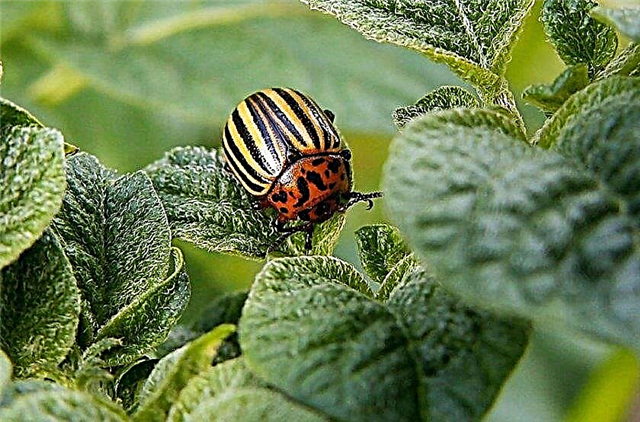
- Wireworm. This pest makes many moves in the tubers, through which pathogens enter them, causing rotting of the crop. This problem is easier to prevent than to try to get rid of it, therefore, before planting potatoes, it is recommended to dig in parts of the beds planted on the stakes of the vegetable in different places of the bed, and after the pest falls into such a trap (this usually takes no more than a day), it is carried away from your site. The approximate depth for placing the lures is 10 cm.
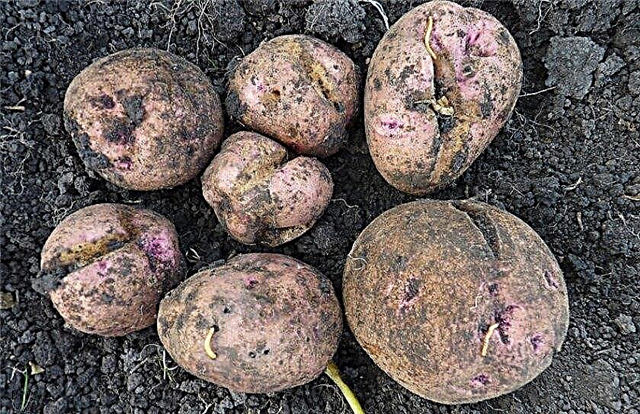
With early ripening of the culture, its defeat by late blight is not excluded, therefore, in places of high humidity, the prevention of this disease will not be superfluous. The most effective way is to fertilize the soil with potassium-phosphorus mixtures, therefore, as soon as the bushes reach a 30-cm height, they are treated several times with copper sulfate, maintaining an interval between procedures of 10 days. Before spraying, you need to dissolve 2 g of the substance in 10 l of pure water.
Important! For 2–3 weeks before the expected harvest, any processing of potatoes with chemicals should be stopped so that they do not remain in the tubers.
Ripening dates and features of harvesting
How many days to dig potatoes - each gardener decides for himself, because when growing the Bellarose variety, tubers are considered ripened already 45 days after planting. Full ripening of the vegetable falls on 50–70 days, so you can postpone the massive harvest at this time. To make the potato peel coarser and less damaged during harvesting, a week before this process, you can cut the tops at a height of 15 cm from the soil surface.
After removing the tubers from the ground, they are dried for several days under a canopy, sorted and sent to a ventilated storage with an air temperature of + 4 ° C. In such a room, the harvested potato crop can lie for at least 7–8 months without losing its taste.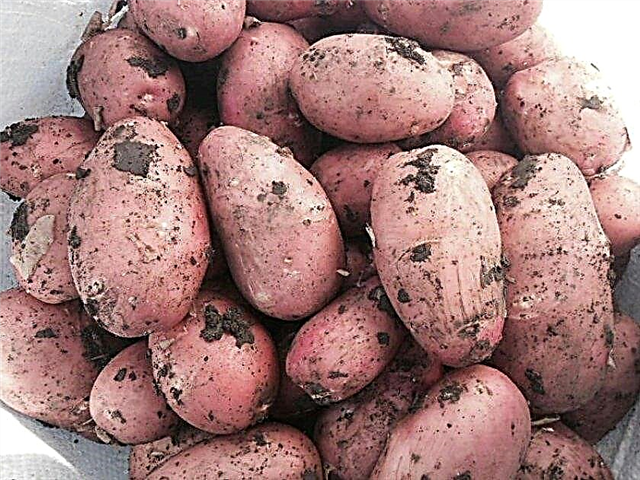
Bellarosa is a great example of an unpretentious vegetable that even a beginner gardener can handle growing it. Moreover, with a little effort, you will get a plentiful harvest of delicious tubers, which not every variety can boast of.
Network user reviews:
ADVANTAGES:
Always high yields.
LIMITATIONS:
It is sometimes difficult to find seed material for sale.
Summer residents have a hot time - the time of harvest. Everything lovingly planted in the spring, watered, weeded and fertilized during the summer, will finally be collected and put into bins. We, too, did not stand aside from this fruit and vegetable theme. Previously, the cottage we had was just for relaxation, without any beds. Then they decided: why should the earth disappear? We have been planting potatoes for several years now. Favorite variety of Bellarosa. We plant a small area with potatoes, and the crop is always happy. This year especially. Potatoes of this variety are mostly large, smooth, with pink skin. Taste good. From one bush, on average, we get large 4-6 potatoes. And this year, my husband also started breeding Bellarosa from seeds. Of course, there are many troubles. But look at the result. Next year should get elite potatoes.



